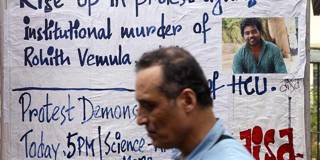
How India’s Caste System Survives
India has been shaken by the suicide of a Dalit student in Hyderabad – a stark reminder of the durability of India's rigid, caste-based social stratification. Why, despite constitutional guarantees of equality and affirmative action for lower-caste Indians, have these divisions endured?
NEW DELHI – On January 17, Rohith Vemula, a PhD candidate at the University of Hyderabad in India’s Telangana state, hanged himself. Even in a country of 1.2 billion people, a single death can have a major impact.